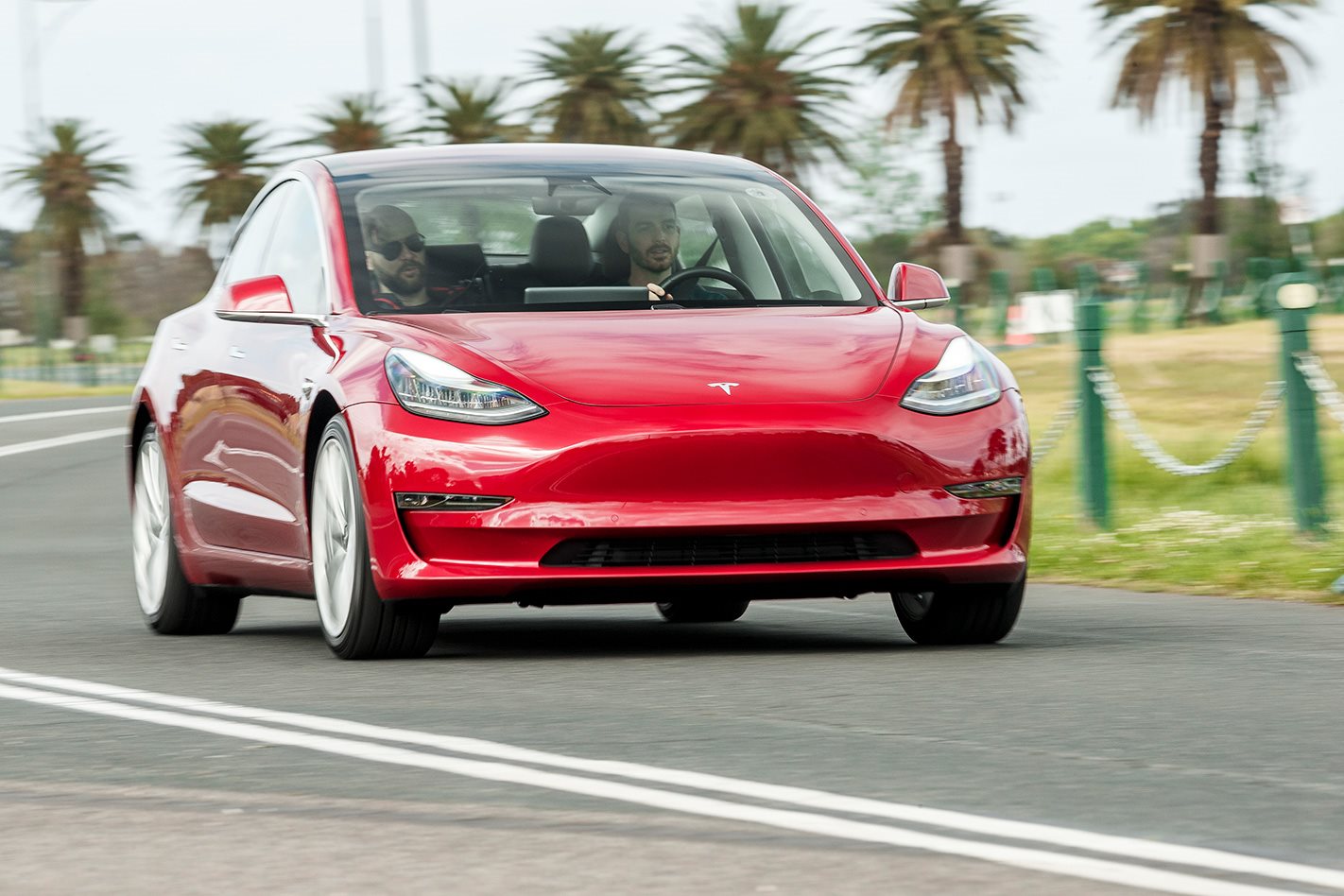IT’S IMPOSSIBLE to have a conversation about the future of cars without talking about Tesla. The American brand’s disruptive, come-from-nothing emergence as an influential player in the global automotive sphere lit a fire under the industry at large to which many car makers are still scrambling to respond.
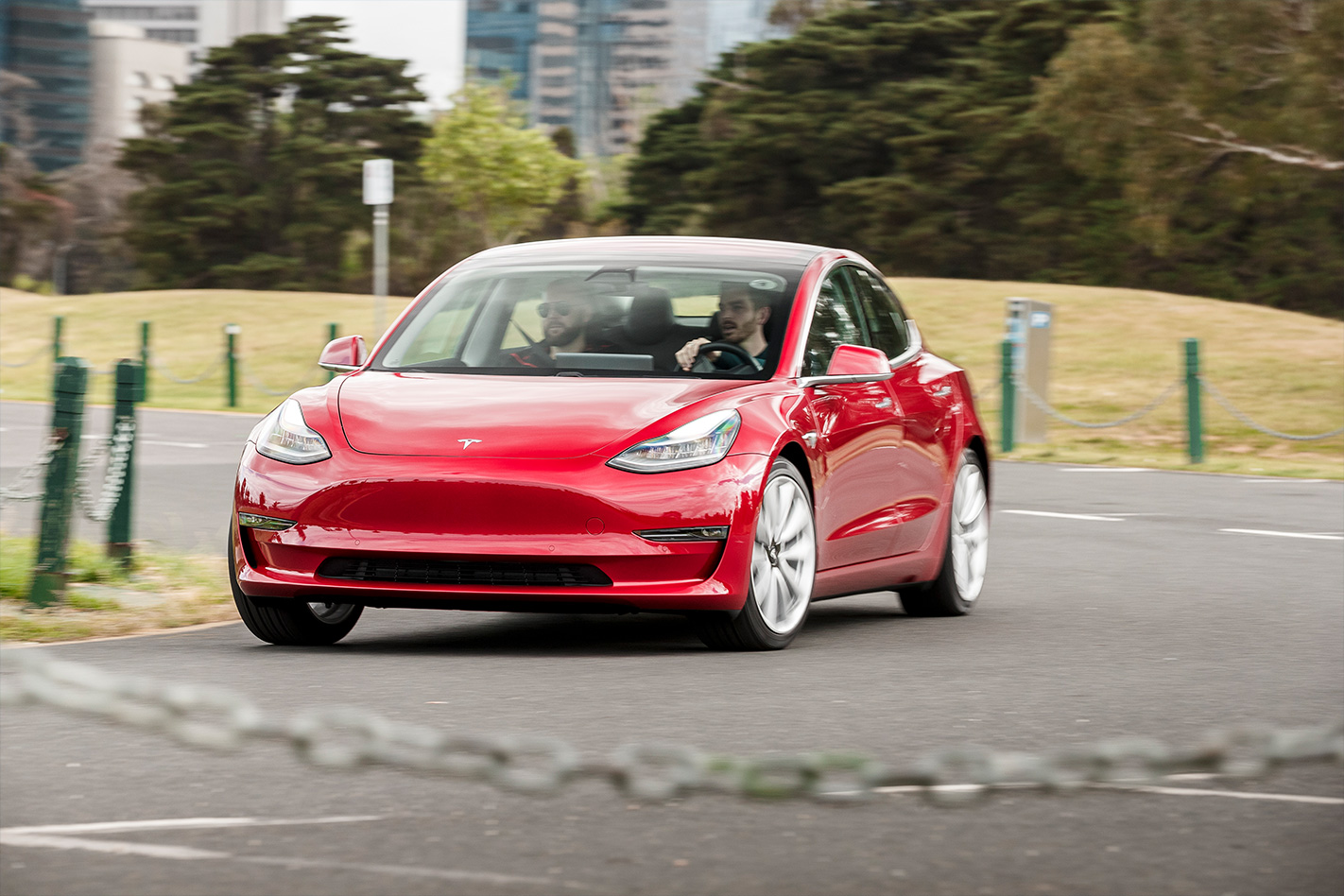
Australia is still scaling the foothills of EV adoption in the mainstream, and the prospect of ownership in this country is arguably at its most compelling when considering the service offered by Tesla’s expansive charging network. Its relatively resolved version of future mobility is already on offer here, if you’re a particularly well-heeled early adopter, that is. The most affordable Model S variant costs $112,050 (at time of writing, more on that later), while the Model X SUV is even pricier.
But that is set to change in 2019 with the much anticipated arrival of the Tesla Model 3. This relatively affordable EV is the tech company’s strike on volume-selling executive cars such as the Mercedes-Benz C-Class, BMW 3 Series and Audi A4.
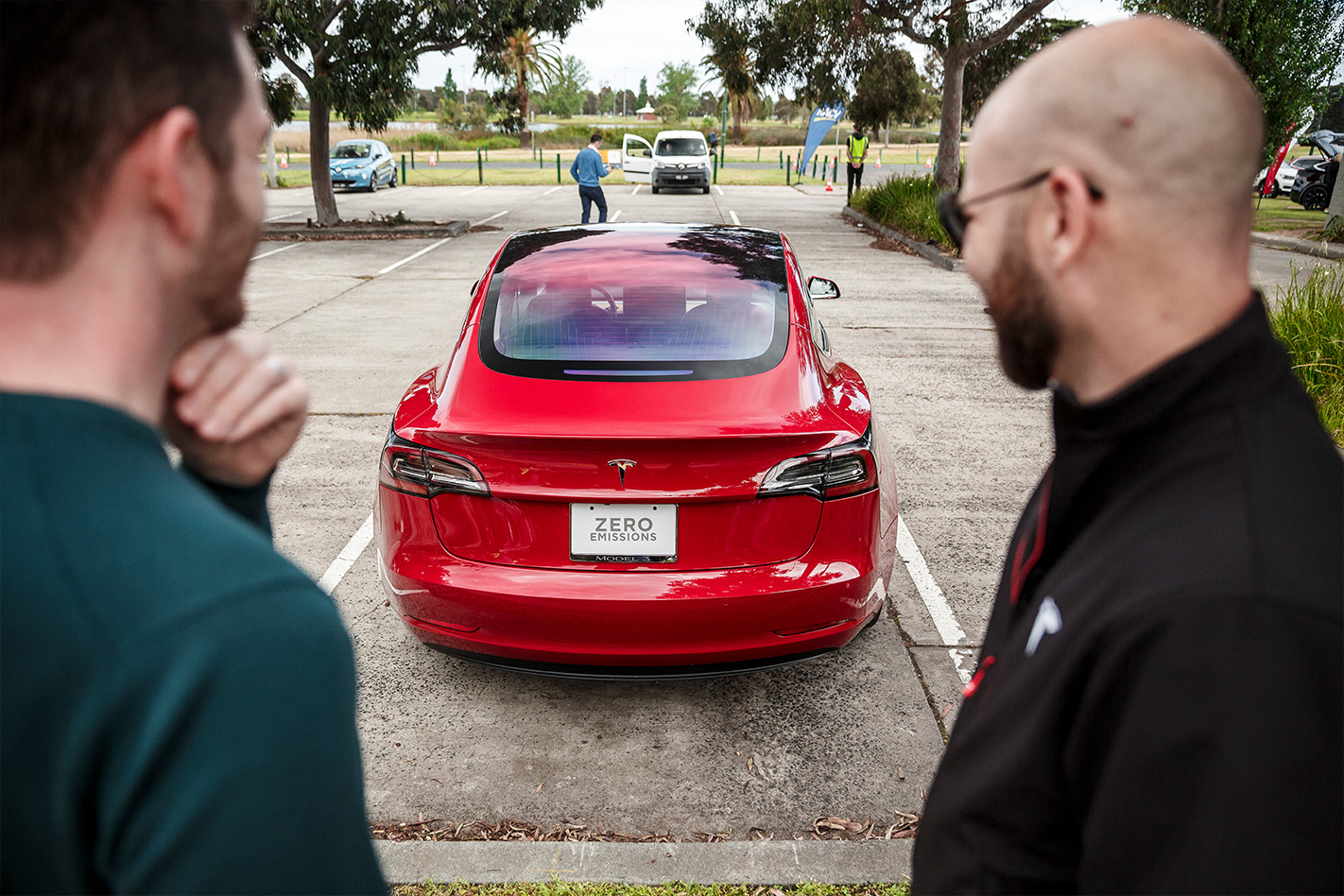
Right-hand-drive production isn’t slated to begin until the middle of 2019, but Tesla has covertly slipped three US-market vehicles into Australia for promotional and evaluation purposes, and Wheels was the only local media outlet invited to drive one. An industry event in Melbourne provided the opportunity, where Tesla was canvassing for potential fleet customers alongside every other manufacturer with an electrified vehicle in market.
Dozens of EVs, PHEVs and even FCVs were on hand, but all eyes were on the Tesla. It’s been almost three years since Elon Musk wheeled the production-ready Model 3 before the world, but constant delays have made it seem like a myth out here. More than 100,000 people placed deposits on the day of its unveiling, including a large number of Australians who continue to wait to take delivery. Even though certain spec details are still secret, for now local enthusiasm remains strong.
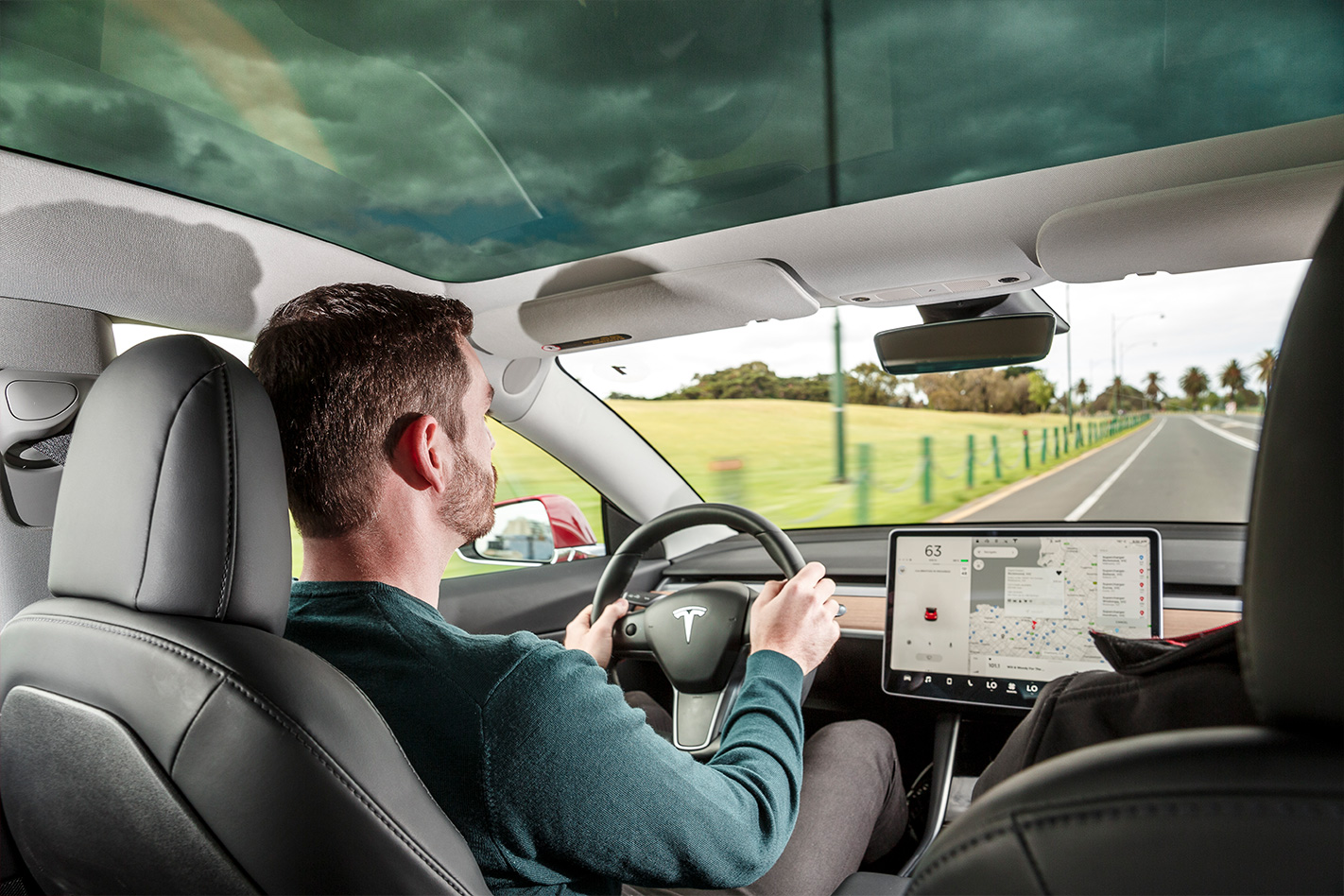
The link between Model S and Model 3 is easy to follow when looking at the two in profile. The latter is essentially a simplified, scaled-down version of the former, and the two share near identical glasshouses even though the Model 3 is almost 30cm shorter at 4694mm. Wheelbases are much closer, separated by a mere 85mm, meaning compact overhangs for the Model 3 with a similarly accommodating interior.
Electric vehicle architecture is expensive, so cost cutting has taken place elsewhere. The Model 3’s boot lid is now manual, though combined cargo space is reasonable at 425 litres including a ‘frunk’ big enough for a carry-on suitcase. Smarter execution sees the 60/40 rear seats lay flat when folded, with no stepped floor like the Model S. There’s more storage underneath without a spare tyre taking space. Get a flat and roadside assistance has to come and swap it, then call you when the old one is repaired.
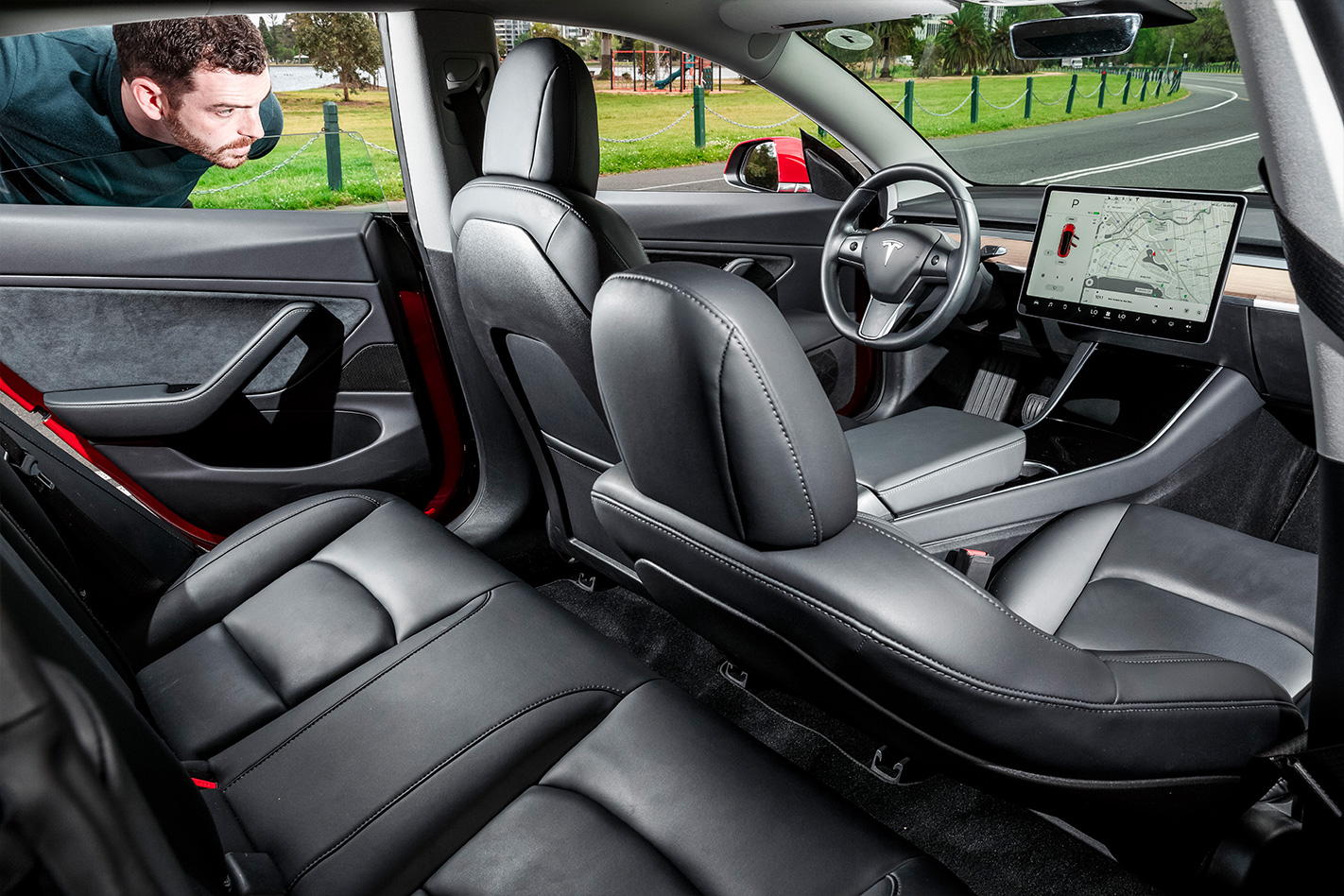
The Model 3 also gains a fully glass roof, including a huge rear panel that stretches from above the front seats over the top of rear occupants to the boot lid much like the Model X’s fishbowl windscreen in reverse. Tesla says it’s the largest in a production car of any kind, and serves two purposes: keeping the roofline low for aesthetics, while maintaining headroom.
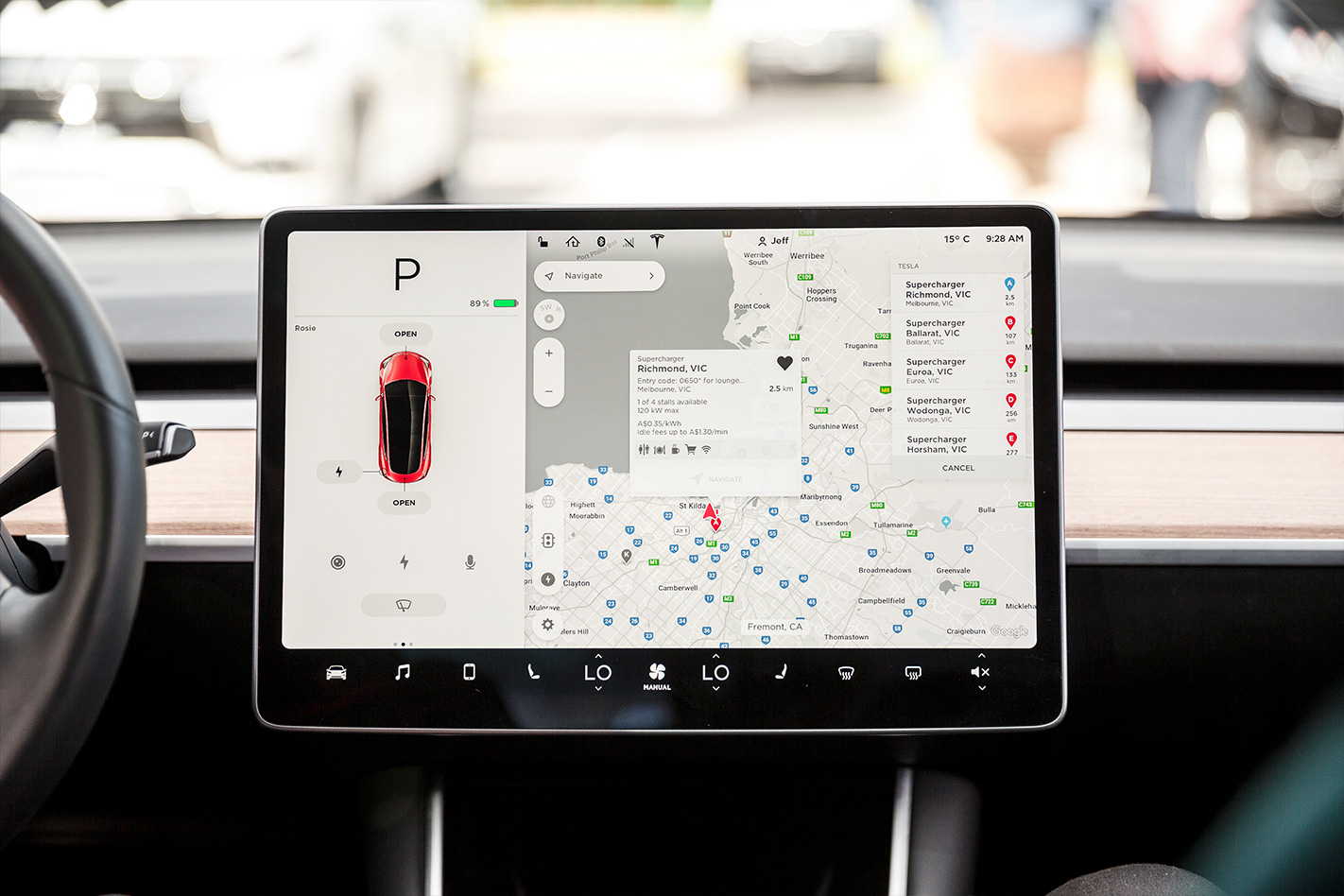
Inside, the uncluttered Model 3 looks like it was modelled off a Norwegian kitchen. All of its functionality is controlled from a single 15-inch touchscreen placed centrally in the slick, albeit extremely minimalist environment. Two multi-directional scroll-wheels mounted on the steering wheel – the only physical buttons in the cabin – have no labels on them, because their jobs may change with future iterations of the car’s software. One left-hand stalk controls indicators and wipers, while one on the right selects drive or reverse. And that’s it. The drive select stalk also activates cruise control and Autopilot with a double click.
Elon Musk might really be from the future
The rest is left to the massive touchscreen, which is somewhat overwhelming given the volume of information represented. Even the glovebox is opened via an on-screen menu. Tesla is now up to Version 9 of its software, which includes more functionality and interface revisions based on customer feedback. Third-party applications are also neatly integrated; say “play Pearl Jam”, and an appropriate playlist will stream via Spotify.
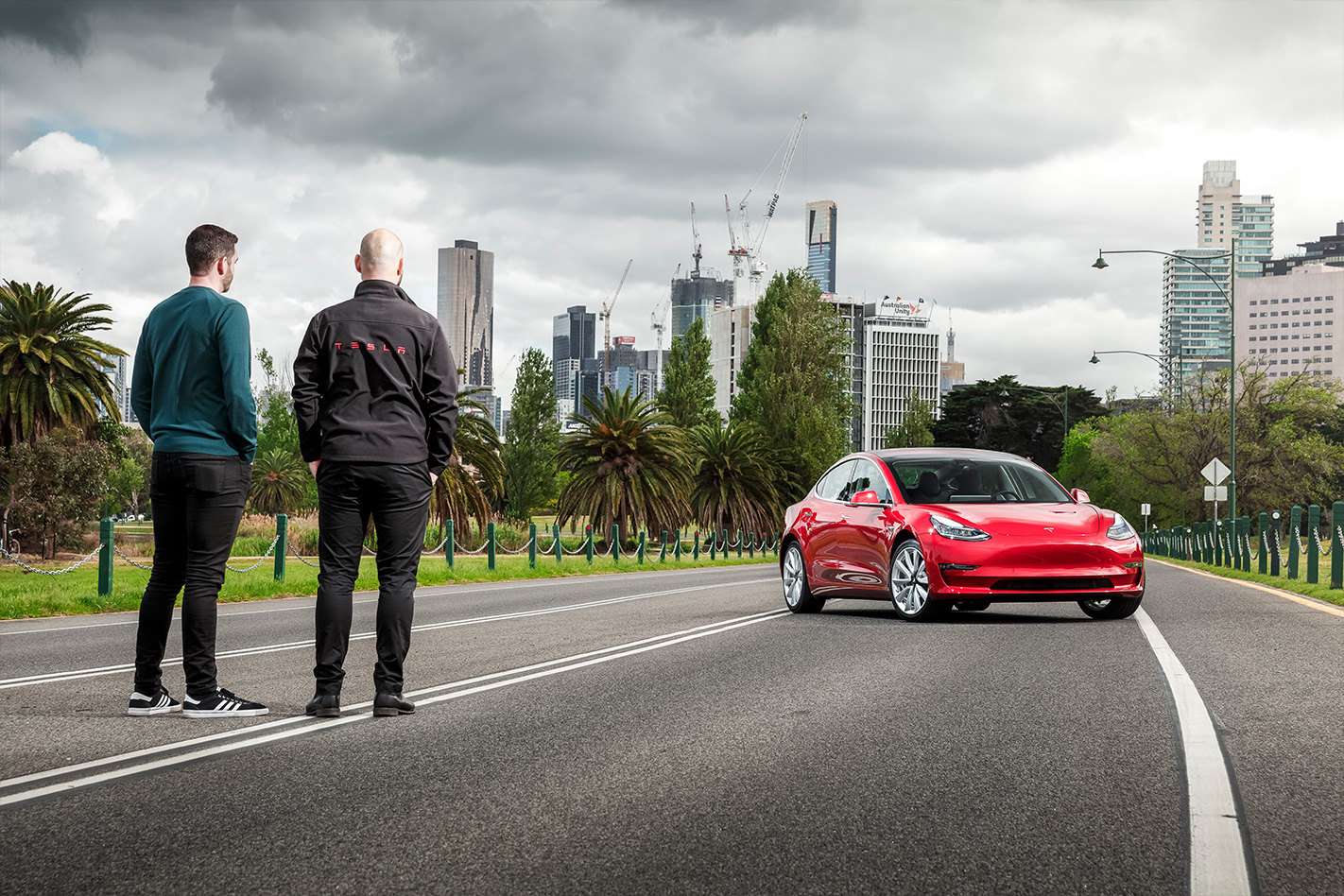
Tesla’s sat-nav software maps journeys based on how much energy is available and where charging stations are. The system can identify the number of empty charging bays before you drive there, as well as display the cost of the charge in advance and Google ratings for cafes nearby.
Tesla has placed a lot of emphasis on relaxation inside the Model 3. The soft seats have heaters as standard (though using them is kryptonite for an EV’s range), and noise suppression is impressive. “One of the things that’s premium in cars of this size is interior space,” says a local Tesla spokesman, before explaining that more room was created by moving the front seats and bulkhead forward, as there’s no combustion engine in the way.
How close the driver sits to the front axle is immediately apparent when you get into the car and turn a corner. It’s an unusual sensation. The shorter wheelbase assists with agility, though the perception of that is heightened by the driving position. Car setup is heavily customisable. There are Comfort, Standard and Sport drive modes, Low and High settings for its regenerative braking force, Chill and Standard modes for take-off speed, and two levels of steering assistance called Comfort and Normal.
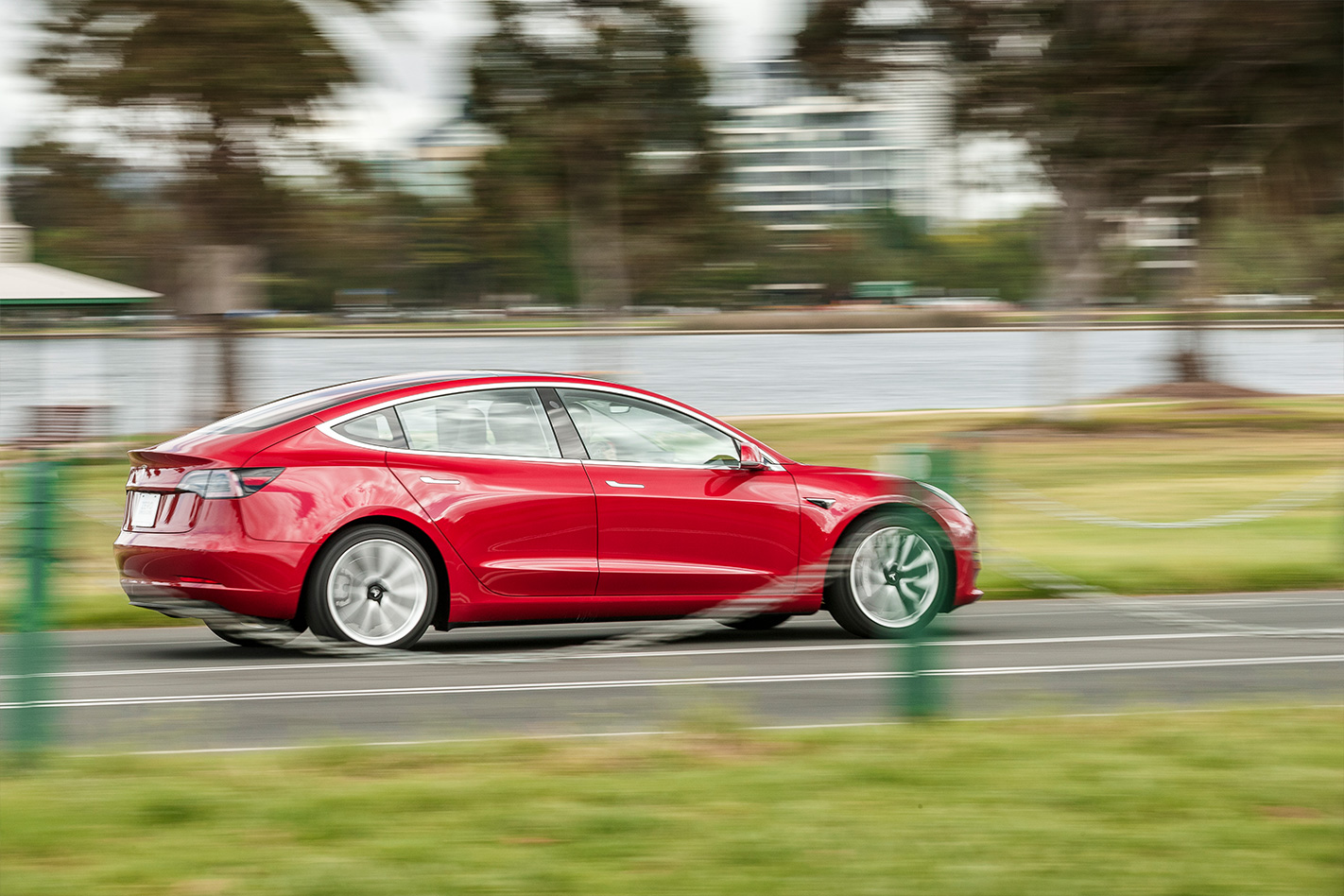
Comfort steering is only really useful for tight manoeuvres within car parks, while the Chill take-off mode works when creeping forward in stop-start traffic by smoothing out inputs and saving a bit of range. High regeneration turns the Model 3 into a single-pedal car while feeding the most energy back into the battery.
For now its suspension is passive dampers with coil springs, though an air set-up is in the company’s future. The Model 3’s on-road behaviour is geared towards comfort rather than dynamics. It’s quite soft and spongy, with significant bodyroll through corners even though much of its weight resides in floor-mounted battery packs.
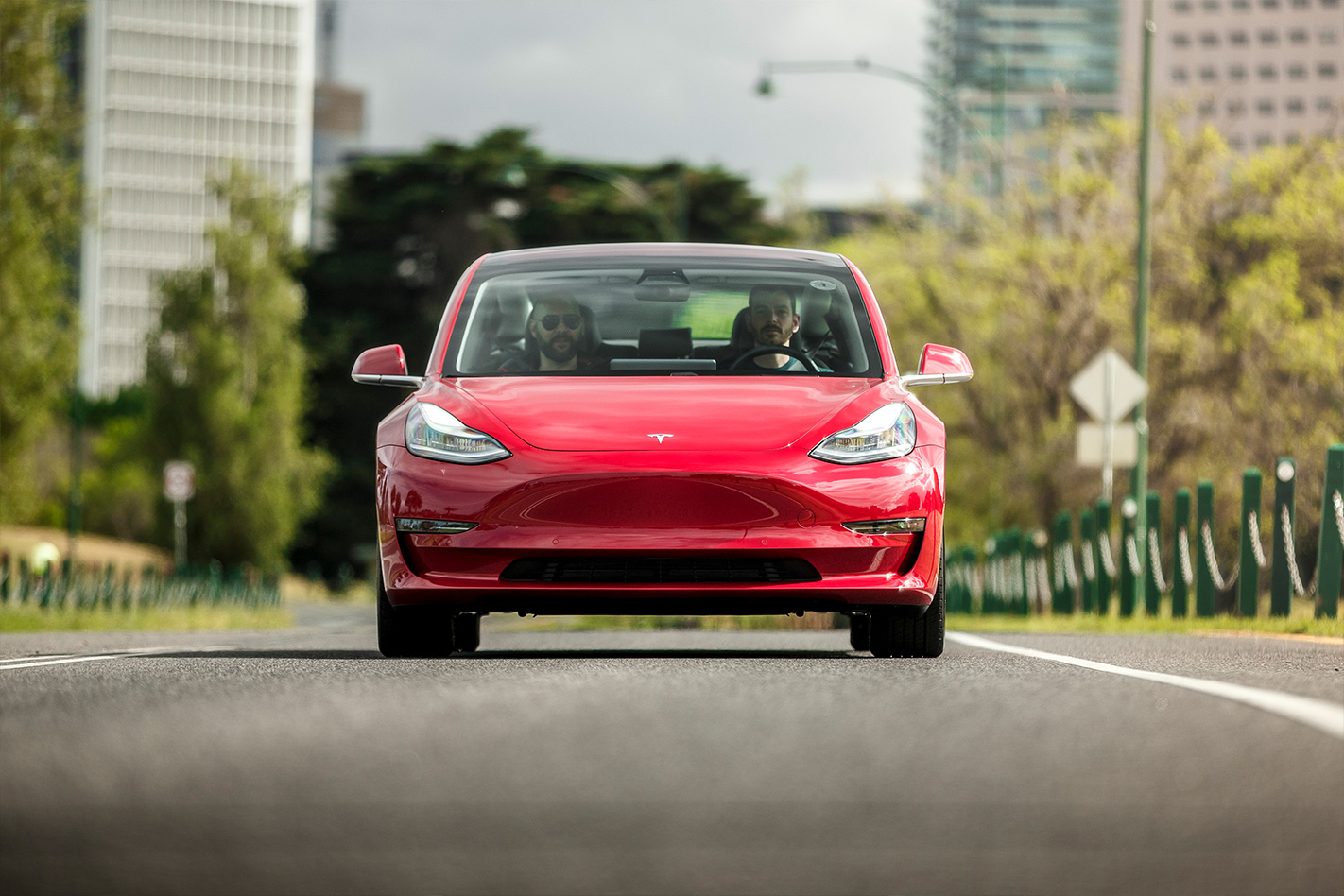
Anybody who has experienced a dual-motor Model S or X will find the rear-wheel-drive Model 3’s modest launch performance much less heart-stopping in ferocity, though more than adequate at 5.6sec to 100km/h for this car’s intended function. Exact outputs in kW and Nm are somewhat cryptic to decode, but should be made clear when the car arrives for real. Sportier Long Range and Performance variants with dual motors and 500km range are available, though the two cheaper versions with less battery capacity are the ones most people with deposits down are waiting on. The most affordable of which (called Standard) will have a 50kWh battery with 350km range, and is promised to come in at the US$35,000 mark brand founder Elon Musk promoted way back at the beginning.
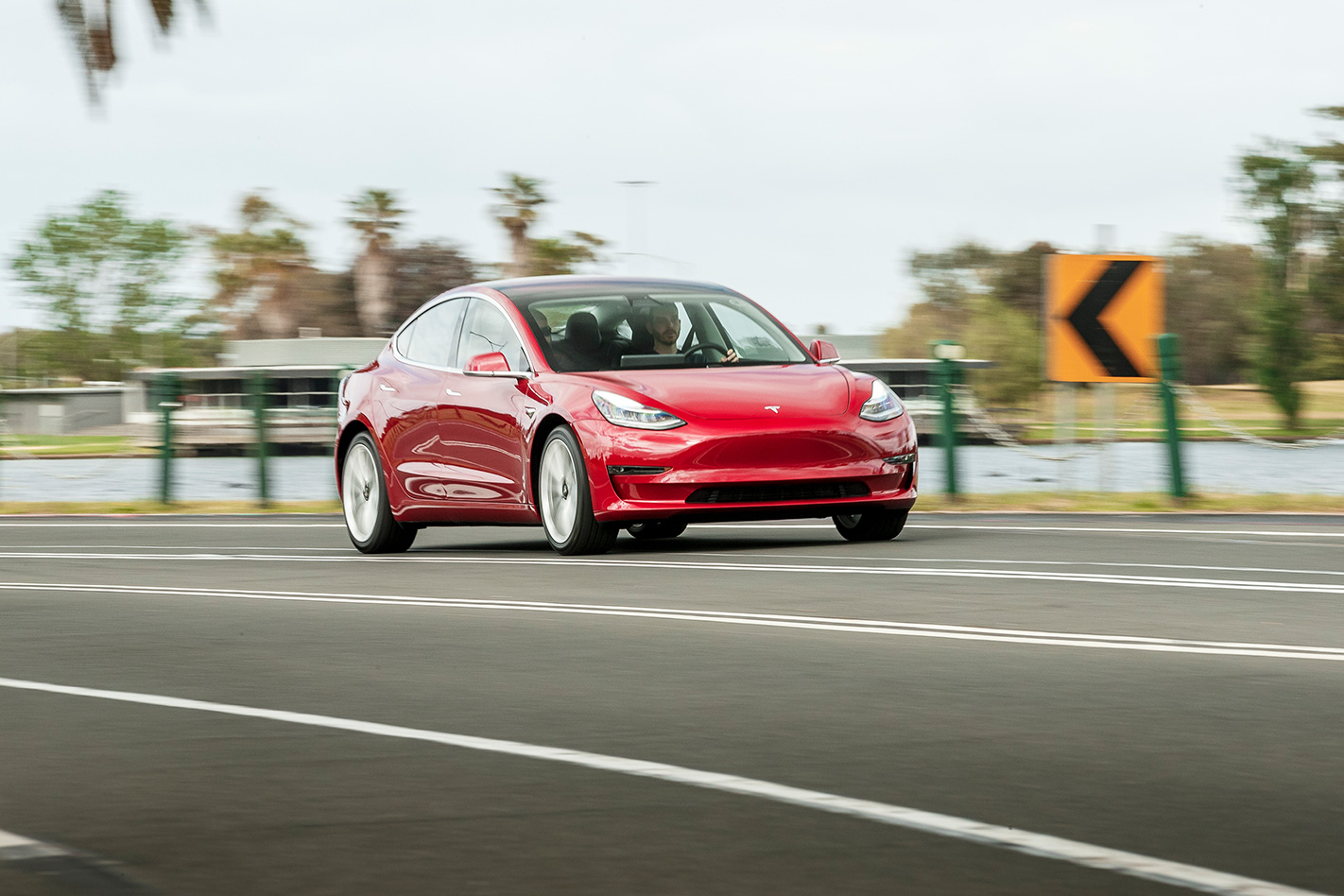
For now the line-up includes Model 3 Mid Range RWD at US$46,000 with a 62kWh pack, followed by Long Range and Performance AWD variants with 75kWh packs at US$53,000 and US$64,000 respectively, the latter with a 3.5sec sprint to 100km/h. Tesla aims to maintain price parity around the world, meaning a US$46,000 Mid Range Model 3 with 420km range should cost the same in Australia, plus local taxes, on-roads and delivery. That puts it at under $70K after currency exchange, and the Standard Model 3 at under $60K, if/when it comes to pass.
Mainstream premium manufacturers are only now dipping their toes into the EV waters with big, expensive vehicles that will ideally set them up to build more affordable EVs in the near future. That’s a process Tesla has already been through with Model S and X before moving onto Model 3, though it has not been without difficulty or delay. Australia has been identified as one of the first markets to get right-hand-drive Model 3s when production starts, though whether that is around mid-2019 remains to be seen.
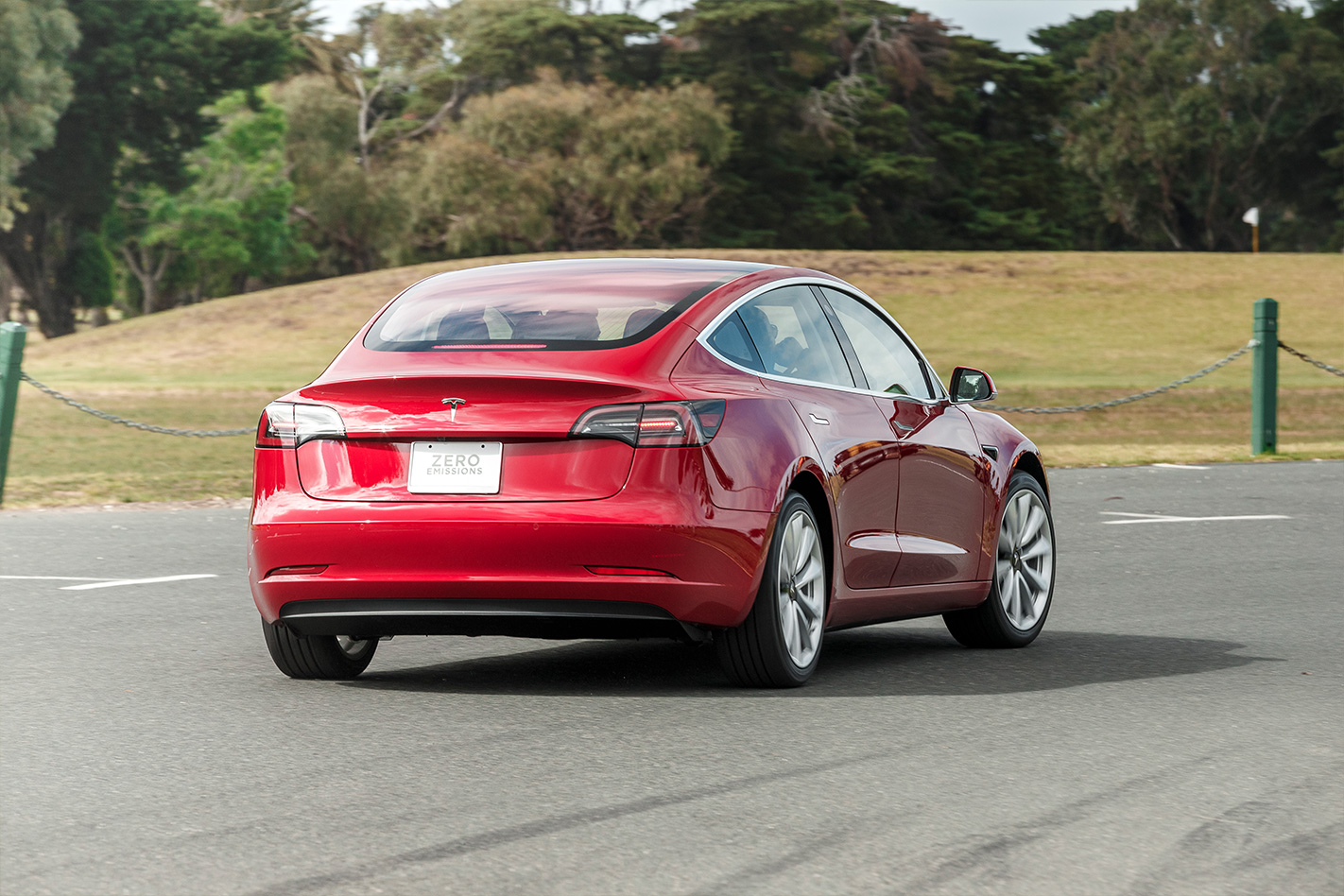
Time is not on Tesla’s side. The potential is there for Model 3 to springboard off the extensive groundwork it has already done and seal the brand’s long-term success, but it needs to arrive sooner rather than later. Those who signed up to Elon’s vision are ready to part with their cash now, but the rest of the industry is quickly chasing down the brand’s head start. The question is: how long can Tesla outrun them?

